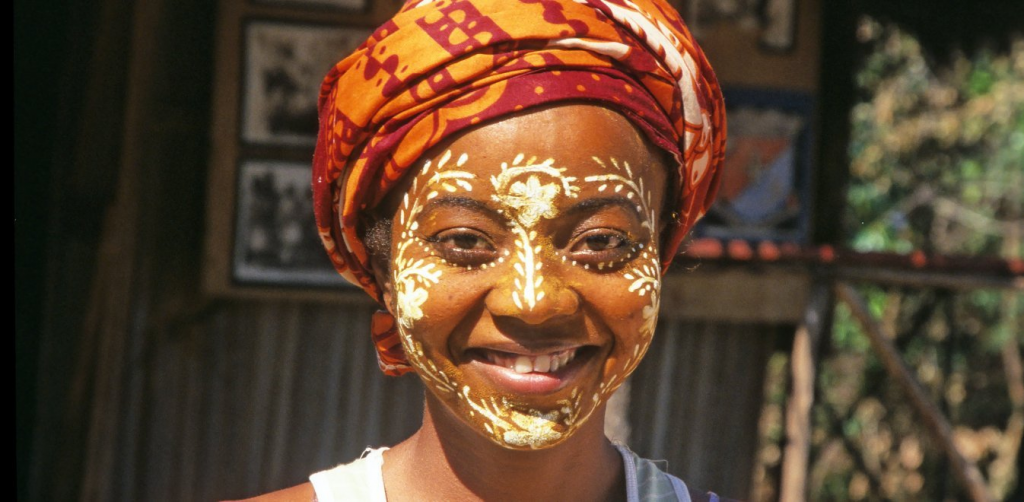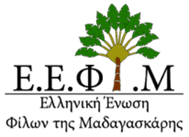
Tonga-Soa !

Ελληνική Ένωση Φίλων Μαδαγασκάρης|Μαδαγασκάρη|Αφρική|
Επίσημη ιστοσελίδα της Ελληνικής Ένωσης Φίλων Μαδαγασκάρης

Tonga-Soa !
Αγαπητά μέλη και φίλοι της Ελληνικής Ένωσης Φίλων της Μαδαγασκάρης,
Σίγουρα έχετε λάβει ήδη αρκετά e-mails σχετικά με την αλλαγή της Προστασίας Δεδομένων, την πολιτική απορρήτου και τον νέο κανονισμό GDPR που θέσπισε η Ευρωπαϊκή Ένωση και έχει τεθεί σε πλήρη ισχύ από τις 25 Μαΐου.
Η νομοθεσία έχει ως στόχο την εξασφάλιση μεγαλύτερης ασφάλειας των δεδομένων σας στον ψηφιακό κόσμο.
Θα θέλαμε λοιπόν να σας γνωστοποιήσουμε ότι τα στοιχεία σας δεν τίθενται προς επεξεργασία και δεν μεταβιβάζονται.
Σας ευχαριστούμε πολύ για την εμπιστοσύνη σας και χαιρόμαστε που θα συνεχίσουμε να είμαστε σε επικοινωνία.
Σε κάθε περίπτωση, για οποιαδήποτε τροποποίηση στοιχείων ή διαγραφή ή οποιαδήποτε απορία, μπορείτε να μας στείλετε e-mail στο enfimad@yahoo.com.
Παραμένουμε στην διάθεσή σας για οποιαδήποτε απορία ή διευκρίνιση.
Με εκτίμηση,
Το ΔΣ της ΕΕΦΙΜ
Manahoana, αγαπητά μέλη και φίλοι της Ένωσής μας,
Έφυγε –σήμερα- από τη ζωή, ο Δημήτριος Βασιλόπουλος, ο οποίος αγάπησε ιδιαίτερα την Μαδαγασκάρη. Ήταν σύζυγος της προέδρου ΕΕΦΙΜ, κ. Καλλιρρόης Γκόνη.
Η Εξόδιος Ακολουθία θα τελεστεί την Τρίτη 19 Ιουνίου και ώρα 11:00, στον Ιερό Ναό Αγίας Σοφίας Νέου Ψυχικού.
Το ΔΣ της Ένωσης Φίλων της Μαδαγασκάρης
Φεστιβάλ Αφρικανικής Γαστρονομίας, Μουσικής, Λαϊκής Τέχνης
Οι Πρεσβείες και τα Επίτιμα Προξενεία των Αφρικανικών χωρών διαπιστευμένα στην Ελλάδα, σας προσκαλούν στο «17ο Φεστιβάλ Αφρικανικής Γαστρονομίας, Μουσικής και Λαϊκής Τέχνης» που θα πραγματοποιηθεί στις 12 και 13 Μαΐου 2018, στο Λιβυκό Σχολείο στο Ψυχικό (25ης Μαρτίου 2 και Μαραθωνοδρόμων, Π. Ψυχικό).
Οι Αφρικανικές χώρες που θα συμμετάσχουν στο φεστιβάλ (Αλγερία, Αγκόλα, Αίγυπτος, Αιθιοπία, Γκάνα, Ακτή του Ελεφαντοστού, Κένυα, Λιβύη, Μαδαγασκάρη, Μαρόκο, Μπουρούντι, Νιγηρία, Σενεγάλη, Σεϋχέλλες, Νότια Αφρική, Σουδάν, Τυνησία, και Ζιμπάμπουε), θα δώσουν την ευκαιρία στους επισκέπτες να γνωρίσουν τα ήθη και τα έθιμά τους, προβάλλοντας τοπικές φορεσιές, μουσική και χορό. Στα περίπτερα θα πωλούνται είδη λαϊκής τέχνης, ενδυμασίες καθώς και παραδοσιακά εδέσματα και ποτά.
Μέρος των εσόδων του 17ου Φεστιβάλ Αφρικανικής Γαστρονομίας, Μουσικής και Λαϊκής Τέχνης, θα διατεθούν για την ενίσχυση του πανελλαδικού έργου του Οργανισμού «Το Χαμόγελο του Παιδιού».
Ώρες Λειτουργίας:
Σάββατο, 12 Μαΐου: από τις 10:00 έως τις 22:00
Κυριακή, 13 Μαΐου: από τις 10:00 έως τις 19:00.
Τιμή Εισιτηρίου:
Ενήλικες: 3€
Παιδιά έως 10 ετών: Δωρεάν
Για περισσότερες πληροφορίες:
Πρεσβεία Νοτίου Αφρικής – Τηλ.: 210-6178044 / 210-6178020
«Το Χαμόγελο του Παιδιού» – Τηλ. 2103306140
ΑΝΑΚΟΙΝΩΣΗ
Αγαπητά μέλη και φίλοι της Ε.Ε.ΦΙ.Μ,
Σας ενημερώνουμε ότι διοργανώθηκε ανθρωπιστική αποστολή της Βαλκανικής Αμφικτυονίας στη Μαδαγασκάρη, κατά το χρονικό διάστημα μεταξύ 24 Μαρτίου – 1 Απριλίου 2018, στο Ορθόδοξο Ορφανοτροφείο της Ιεράς Μητροπόλεως του Ανταναναρίβο.
Η Ιερά Μητρόπολη τελεί υπό τη σκέπη του Πατριαρχείου Αλεξανδρείας και Πάσης Αφρικής και τη διεύθυνση του Σεβασμιωτάτου Μητροπολίτη Ιγνατίου, πλαισιωμένη από πολιτιστικές, καλλιτεχνικές, αθλητικές και κοινωνικές δραστηριότητες.
Η Βαλκανική Αμφικτυονία εκπροσωπήθηκε από τη Δρα. Ελένη Γ. Μαντρατζή, Δικηγόρο παρ’ Αρείω Πάγω και ιδρύτρια της Βαλκανικής Αμφικτυονίας, και τον κ. Σταμάτιο Ανδρ. Χρήστου, μέλος & διεθνή φωτογράφο, καλλιτέχνη εικόνας και ντοκυμαντέρ.
Επισυνάπτονται το δελτίο τύπου της αποστολής στη Μαδαγασκάρη και το έντυπο της Βαλκανικής Αμφικτυονίας (WWW.AMFIKTIONIA.ORG).
Το δελτίο τύπου παρουσιάζει ενδιαφέρουσες πληροφορίες από το αξέχαστο ταξίδι τους στη Μαδαγασκάρη, η οποία σε αιχμαλωτίζει από την πρώτη στιγμή. Καλή περιήγηση.
Για την Ένωση Φίλων της Μαδαγασκάρης
Με φιλικούς χαιρετισμούς,Η Πρόεδρος Ο Γενικός Γραμματέας
Καλλιρρόη Γκόνη Αλέξανδρος Βασιλάκος

Manahoana αγαπητά μέλη και φίλοι της Ένωσής μας,
Την Κυριακή 18 Μαρτίου πραγματοποιήθηκε η εκδήλωση της Ε.Ε.ΦΙ.Μ. «Ταξιδεύοντας στη ΜΑΔΑΓΑΣΚΑΡΗ», στο καφέ «Μύρτιλλο». Μέλη και φίλοι της Ε.Ε.ΦΙ.Μ. και της Μαδαγασκάρης έδωσαν το παρόν σε μια ζεστή και φιλόξενη βραδιά.
Σας ευχαριστούμε που ήλθατε να “ταξιδέψουμε” στην υπέροχη και μοναδική Μαδαγασκάρη! Ένα νησί πολυπολιτισμικό, μια ήπειρος από μόνη της, με φοβερά χρώματα, αρώματα και ένα γέλιο εγκάρδιο και γνήσιο. Ένας πλανήτης ξεχωριστός στο γήινο περιβάλλον που μας περιβάλλει έχοντας ένα δικό του ρολόι να κυλάει το χρόνο (mora-mora)!
Το Δ. Σ της Ε.Ε.ΦΙ.Μ. αισθάνεται την ανάγκη να ευχαριστήσει δημόσια όλους όσους συνέβαλλαν στην επιτυχία της εκδήλωσης. Το συντονισμό είχε ο Jean-Daddah Andrianirina. Το καλωσόρισμα «Tonga Soa» έγινε από τον Αλέξανδρο Βασιλάκο.
Ευχαριστούμε θερμά την κα Αλεξία Ορφανού που μας διηγήθηκε το παραμύθι των Δύο Μάγων, της φυλής Sakalava Μαδαγασκάρης. Ευχαριστούμε επίσης, για τις φωτογραφίες τους και το μοίρασμα εμπειριών μέσα από τη περιγραφή τους, τον Γιάννη Καμάρα στο «Tana Rocks», τον Παναγιώτη Μπότη στο «Αναζητώντας τους Λεμούριους», τον Χρήστο Νικολάου στο «People» και την Καλλιρρόη Γκόνη στην «Επιστροφή στη Μαδαγασκάρη».
Κλείνοντας, θα θέλαμε να ευχαριστήσουμε θερμά τους εργαζόμενους του «Μύρτιλλο» για τα εδέσματα τα οποία ετοίμασαν.
Για την Ένωση Φίλων της Μαδαγασκάρης
Με φιλικούς χαιρετισμούς,
Η Πρόεδρος Ο Γενικός Γραμματέας
Καλλιρρόη Γκόνη Αλέξανδρος Βασιλάκος
ΔΕΛΤΙΟ ΤΥΠΟΥ
Η Ελληνική Ένωση Φίλων της Μαδαγασκάρης στην Ελλάδα (Ε.Ε.ΦΙ.Μ.) διοργανώνει εκδήλωση με θέμα «Ταξιδεύοντας στη ΜΑΔΑΓΑΣΚΑΡΗ».
Στην εκδήλωση θα παρουσιαστούν φωτογραφίες και οπτικοακουστικό υλικό από τους Γιάννη Καμάρα, Παναγιώτη Μπότη, Χρήστο Νικολάου, Καλλιρρόη Γκόνη, οι οποίοι ταξίδεψαν πρόσφατα στη Μαδαγασκάρη.
Την εκδήλωση θα τιμήσει με την παρουσία της η κ. Αλεξία Ορφανού συγγραφέας του βιβλίου ΠΑΡΑΜΥΘΙΑ ΑΠΟ ΤΗ ΜΑΔΑΓΑΣΚΑΡΗ.
Η εκδήλωση θα πραγματοποιηθεί στο καφέ «Μύρτιλλο», στην οδό Λάμψα & Τριφυλίας, Αμπελόκηποι Αττικής (( 2110123176) την Κυριακή 18 Μαρτίου 2018 και ώρα 18:00.
Η είσοδος είναι ελεύθερη και ανοικτή στο ευρύ κοινό.
Αναλυτικό πρόγραμμα στην είσοδο του καφέ «Μύρτιλλο».
Για την Ένωση Φίλων της Μαδαγασκάρης
Με φιλικούς χαιρετισμούς,
Η Πρόεδρος Ο Γενικός Γραμματέας
Καλλιρρόη Γκόνη Αλέξανδρος Βασιλάκος
Manahoana, αγαπητά μέλη και φίλοι της Ένωσή μας,
Πέθανε την Παρασκευή 23 Φεβρουαρίου 2018, στη Μαδαγασκάρη σε ηλικία 80 ετών η Αθηνά-Σταυρούλα Σκοπελίτη, η οποία ήταν απόγονος Ελλήνων μεταναστών
Το ΔΣ της Ε.Ε.ΦΙ.Μ.
Αγαπητά μέλη και φίλοι της Ένωσής μας,
Το ΔΣ της Ελληνικής Ένωσης Φίλων της Μαδαγασκάρης -Ε.Ε.ΦΙ.Μ., έχει την χαρά να σας προσκαλέσει στην εκδήλωση με θέμα «Ταξιδεύοντας στη ΜΑΔΑΓΑΣΚΑΡΗ», η οποία θα πραγματοποιηθεί στο καφέ «Μύρτιλλο», στην οδό Λάμψα & Τριφυλίας, Αμπελόκηποι Αττικής (( 2110123176) την Κυριακή 18 Μαρτίου 2018 και ώρα 18:00.
Η παρουσία τόσο η δική σας, όσο και των φίλων σας, θα αποτελέσει μεγάλη τιμή και χαρά για εμάς.

Ελάτε να ταξιδέψουμε νοερά στη ΜΑΔΑΓΑΣΚΑΡΗ, το νησί του mora mora!
Ελάτε να σας κεράσουμε στον χώρο των «εκλεκτών ψυχών», να βοηθήσουμε έτσι άτομα από ευπαθείς και ευάλωτες ομάδες που εκπαιδεύονται και εργάζονται στο «Μύρτιλλο».
Στην εκδήλωση θα παρουσιαστούν φωτογραφίες και οπτικοακουστικό υλικό από τους Γιάννη Καμάρα, Παναγιώτη Μπότη, Χρήστο Νικολάου, Καλλιρρόη Γκόνη, οι οποίοι ταξίδεψαν πρόσφατα στη Μαδαγασκάρη.
Την εκδήλωση θα τιμήσει με την παρουσία της η κ. Αλεξία Ορφανού συγγραφέας του βιβλίου ΠΑΡΑΜΥΘΙΑ ΑΠΟ ΤΗ ΜΑΔΑΓΑΣΚΑΡΗ.
Η είσοδος είναι ελεύθερη και ανοικτή στο ευρύ κοινό.
Αναλυτικό πρόγραμμα στην είσοδο του καφέ «Μύρτιλλο».
Σας περιμένουμε!
Για πληροφορίες, μπορείτε να απευθύνεστε σε:
Για την Ένωση Φίλων της Μαδαγασκάρης
Με φιλικούς χαιρετισμούς,
Η Πρόεδρος Ο Γενικός Γραμματέας
Καλλιρρόη Γκόνη Αλέξανδρος Βασιλάκος